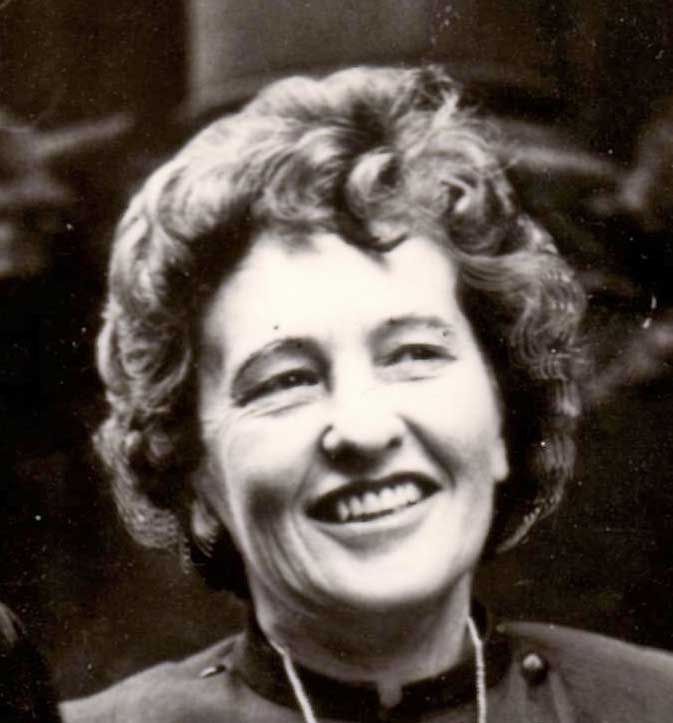Auction of Paintings by Deaconess Phoebe Willetts
This is a legacy web page, originally published in January 2015.
The auction took place, as planned, and the family is pleased to report there was a great deal of interest in the paintings. All were sold and there was vigorous bidding for many lots. A significant sum has been sent to Child Soldiers International and the remainder of the proceeds has been divided among the painter's four grandchildren.
The auctioneers have created a permanent web page with photographs for each of the fifty lots. (This does not cover every single painting/drawing, as some lots included more than one.) To see these photographs click here.

On 18 February 2015, a lifetime's output of paintings by Deaconess Phoebe Willetts will be auctioned on the second day of a Fine Art Sale in Colchester, by Reeman Dansie. The sale will cover a period of fifty years from her time as a student at Birmingham Art School and the Royal Academy in the 1930s, through to her death in 1978. Half of the net proceeds will go to Child Soldiers International (formerly the Coalition to Stop the Use of Child Soldiers).
The early work includes life studies, still life and portraits. The later work is primarily in a unique style of figurative symbolism on peace and religious questions. The major paintings will be sold individually and others are in combined lots. There is a total of 90 items, in 50 lots, from Lot 1099 to Lot 1148.
- For the catalogue and photographs of nearly all the paintings,
click here.
[The link has been redirected to current catalogue listing]
- There is also a high-quality printed catalogue for the sale as a whole, with just 12 photographs of Phoebe's paintings, available at a cost of £10 from Reeman Dansie, by calling 01206 754 754.
A Sample of the Range of the Different Types of Paintings
A Short Biography of Deaconess Phoebe Willetts
Phoebe joined the Land Army during the Second World War. In Sevenoaks, “that artist wench” met “that conchie fellow”, Alfred Willetts, a conscientious objector working on the same farm. They married in 1942. In the 1960s, Alfred was ordained as a priest and Phoebe as a deaconess in the Church in Wales at Llandaff Cathedral. After their joint ministry in the South Wales mining village of Blaengwynfi, they moved to Manchester, when he became the Rector of Ancoats and she became the Curate. They shared three major concerns: ministry to the poor and disadvantaged, campaigning for peace and the call of women to priesthood. All these concerns are reflected in different ways in the paintings.
Phoebe was an early activist in the Campaign for Nuclear Disarmament and the smaller, less well-known, Direct Action Committee Against Nuclear War. She took part in two demonstrations in April-May 1960 that involved obstructing the entrance to the Atomic Weapons Research Establishment at Foulness Island. On both occasions she was taken to court. She was given a conditional discharge for the first offence and was asked by the court to agree to be bound over for the second offence. On refusing to do so, she had to spend six months in prison, during which time she could at any point have left prison by agreeing to be bound over.
The start of Phoebe's term was in Holloway Prison. She was shocked when, on the way in to start her sentence, the prison officer made “pleasant” conversation, by pointing out where Ruth Ellis (the last woman to be executed in Britain) was buried. Phoebe was later moved to Hill Hall Open Prison (Epping, Essex) (which she actually found to be more difficult). After her release, she produced a book Invisible Bars and several evocative paintings of prison life.
Alfred and Phoebe both became active in the Movement for the Ordination of Women. In October 1977, they invited the Rev. Alison Palmer, from the Episcopal Church in the United States, to celebrate communion in the Holy Apostles' Church, Miles Platting. This highlighted a contradiction between the denial by the Church of England that women could be priests and the mutual recognition of all priests ordained in all parts of the global Anglican Communion. The defiance of Church authority went a stage further when, on 8 January 1978, Alfred and Phoebe concelebrated communion. Hence, Phoebe was the first English woman to celebrate communion in a Church of England parish church. This assertion of the possibility of women's priesthood had been brought forward because Phoebe had terminal cancer. She died just seven weeks later. Alfred ensured that Phoebe's writing on women's call to priesthood was published in January 1979 as a book, Sharing a Vision.